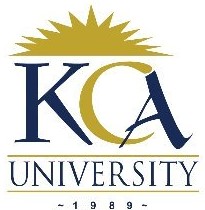
UNIVERSITY EXAMINATIONS: 2014/2015
ORDINARY EXAMINATION FOR THE BACHELOR OF SCIENCE
IN INFORMATION TECHNOLOGY
BIT 4302 TELECOMMUNICATIONS DISTANCE LEARNING
DATE: APRIL, 2015 TIME: 2 HOURS
INSTRUCTIONS: Answer Question ONE and any other TWO
QUESTION ONE
a) A variety of encoding schemes are in use. Explain any three criteria that can be
used in the evaluation or comparison of the different data encoding schemes.
(6
Marks)
b) Discuss the three major transmission impairments experienced by signals.
(6
Marks)
c) Compare and contrast FDMA and TDMA. (6 Marks)
d) Define the following terminologies in relation to satellite communications:
(i) Earth Stations (1 Mark)
(ii) Uplink (1 Mark)
(iii) Downlink (1 Mark)
(iv) Transponder (1 Mark)
(v) Elevation angle (1 Mark)
e) The development of communications-based applications which are the foundation
of our modern society involves many trade-offs in terms of the use of different
types of communications facilities, types of terminal devices, hours of operation
and other constraints. Four of the key constraints associated with the development
of communications applications are throughput, response time, bandwidth and
economics. Discuss how each of these constraints affect communication.
(7Marks)
QUESTION TWO
a) Consider the diagram below that represents a basic communication model.

(i) Consider that the input device and transmitter are components of a personal
computer. The user of the PC wishes to send a message to another user-for
example, “The meeting scheduled for March 25 is canceled”. Explain what
happens from (1) to (6). (6 Marks)
(ii) Now consider a telephone conversation and explain the same sequence of events
from (1) to (6). (4
Marks)
b) What do the following standards represent?
(i) IEEE 802.2 (1 Mark)
(ii) IEEE 802.3 (1 Mark)
(iii) IEEE 802.5 (1 Mark)
(iv) IEEE 802.8 (1 Mark)
(v) IEEE 802.10 (1 Mark)
c) (i) If the time required for the completion of one sine wave is 0.1 s, what is
the frequency of the wave? If the wave’s period is reduced to 0.05 s, what
is its new frequency? (4 Marks)
(ii) Suppose that a signal of 22 dB is applied to a cable that has a loss of 7 dB.
If an amplifier with a 12 dB gain is inserted into the cable at its opposite
end, what is the output signal strength at that location? (1 Mark)
QUESTION THREE
a) With the aid of relevant diagrams, describe the principal components of a digital
communication system. (8 Marks)
b) Networks rely on intermediary devices to provide connectivity and to work
behind the scenes to ensure that data flows across the network. These devices
connect the individual hosts to the network and can connect multiple individual
networks to form an internetwork. State five functions performed by processes
running on intermediary devices. (5 Marks)
c) The TCP/IP model describes the functionality of the protocols that make up the
TCP/IP protocol suite. These protocols, which are implemented on both the sending and receiving hosts, interact to provide end-to-end delivery of applications
over a network. Describe the steps involved in a complete communication
process. (7 Marks)
QUESTION FOUR
a) Each specific transmission system is distinguished by unique factors and
limitations, and each has appropriate applications. Therefore, the selection of the
most effective transmission system for a given application must be made in the
context of a number of key design considerations. Discuss any five of these key
design considerations. (10 Marks)
b) Explain five properties that differentiate DSL variants. (5 Marks)
c) There are three key factors that influence network uptime/availability. State these
three factors and illustrate how they affect availability. (5 Marks)
QUESTION FIVE
a) Given the bit stream below, encode it using:
(i) Frequency Shift Keying (FSK) (2 Marks)
(ii) Manchester (2 Marks)
(iii) Differential Machester (2 Marks)
(iv) Bipolar-AMI (2 Marks)
(v) Non-Return-to-Zero-Inverted (NRZ-I) (2 Marks)
0 1 0 1 1 0 0 1
b) Wireless LANs can accommodate various network topologies. The standard
defines a BSS as a group of stations that communicate with each other. In this
regard, discuss briefly the following 802.11 toplogies:
(i) Ad hoc networks. (2 Marks)
(ii) Basic Service Set (BSS) (2 Marks)
(iii) Extended Service Set (ESS) (2 Marks)
c) There are many different serial communication standards, each one using a
different signaling method. There are three key serial communication standards
affecting LAN-to-WAN connections. Describe briefly the following serial
communications standards:
(i) RS-232 (2 Marks)
(ii) V.35 (2 Marks)
